- Home
- / Blog
- / Interior Design
Lighting And Contemporary Interior Design
12/14/2021
Contemporary interior design is a sophisticated design style that borrows largely from the aesthetics of different design styles in both the modernism and post-modernism eras. Contrary to popular belief, contemporary design differs from the modern design style despite the many similarities in their execution. By definition, contemporary interior design simply refers to the most current and relevant design style. On the other hand, Modernism defines a specific era that begun in the late 1800s, which presented a more industrial look.
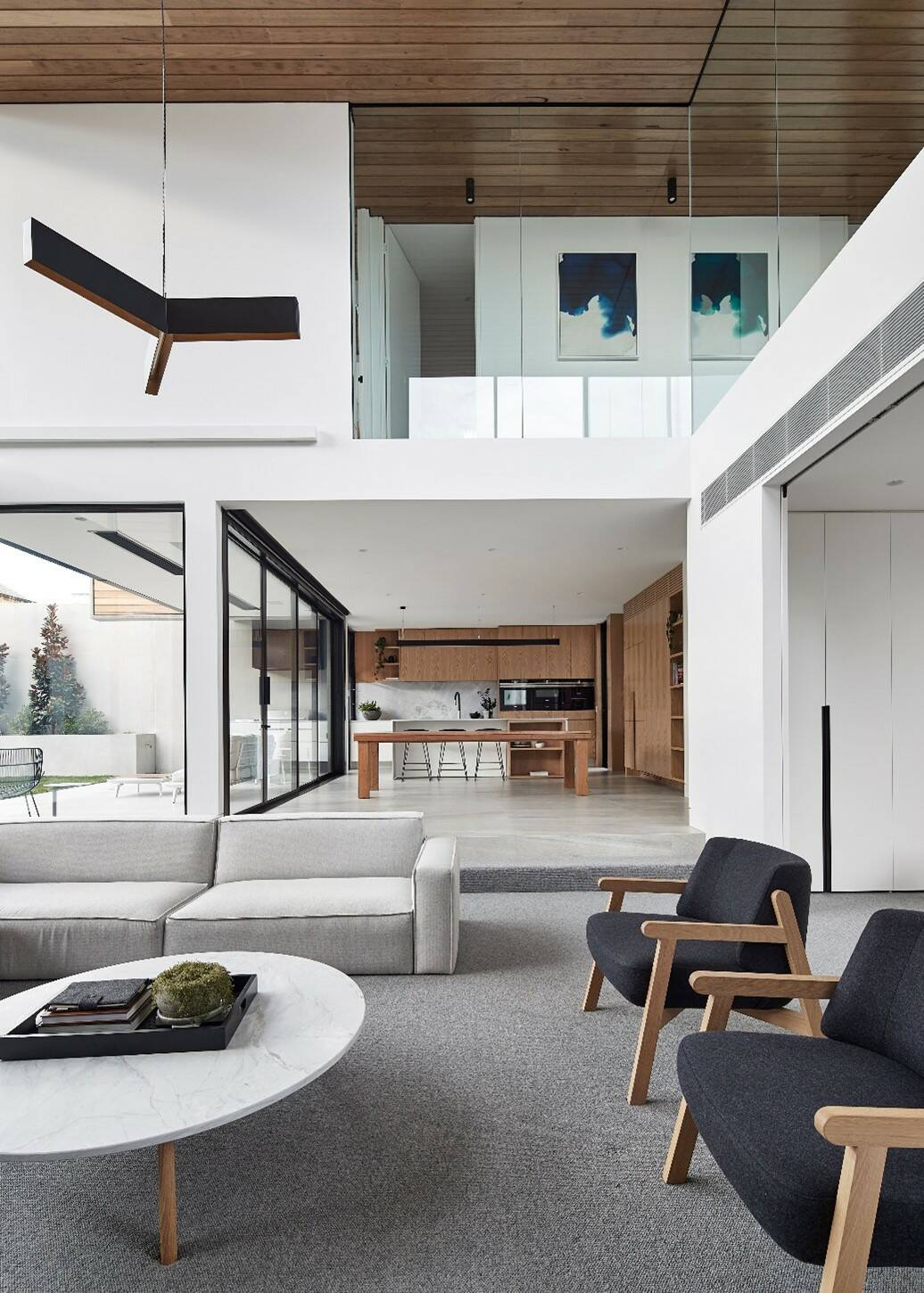
Gallery of Bloomfield Project by FGR Architects, The Local Project, via Pinterest.
While the term ‘contemporary design’ was coined in the 1970s just at the onset of post-modernism, its style has greatly been influenced by the best of the trends in futurism, Art Deco, modernism, and deconstructivism eras. Since contemporary interior design is a reflection of the latest design trends, it has continuously evolved over the years, taking up the best of each era.
Basic Principles of Contemporary Design
Contemporary interior design features a more intentional design style, sleek but innovative, clean but equally bold. It is elegant and refined, with a touch of minimalist, eclectic, tropical, and Scandinavian glamour. If you’re thinking of integrating a contemporary interior design style into your décor, here are the distinguishing features that you need to consider.
1. Clean Lines
Just like in modern interior design, contemporary interior design favors the application of distinct clean lines in its design. However, it has progressed from the strictly sharp straight lines in modernism, introducing curved lines and softer edges in its décor. You can easily locate bold lines in horizontal, vertical, and curved architectural features, art pieces, and other geometric details. The curved lines and soft edges give it a sense of fluidity and a sculptural touch that truly sets contemporary design apart.
2. Minimalism

Form follows function in contemporary interior design, which is a similarity it shares with the modern style. Contemporary interior design features a minimalistic approach with simplified forms designed to maximize productivity in the space. However, contemporary interior design still aims to go beyond function to ensure that the general aesthetics of the space is still visually captivating even in its simplistic form.
3. Material Selection
Influenced by modern design, contemporary design integrates the use of construction materials such as steel, glass, concrete, brick, and timber. It goes a step further to highlight these materials in exposed surfaces, displaying them in their raw natural form. Exposed brick walls, bare concrete surfaces, steel pillars, and wood beams commonly characterize the structure of a contemporary interior.

Additionally, contemporary interior design extends its material selection to the use of more sustainable materials, recycled resources, and eco-friendly material options. According to Decorilla, materials such as cork, bamboo, clay, and recycled plastics can often be spotted in contemporary interior design. Due to the advancement in technology, contemporary design may often feature the most current material options in the market, such as aluminum and different varieties of glass.
4. The Color Palette
The contemporary color palette primarily contains contrasting black, white, and grey neutrals in natural tones. When accents of bold colors are added to contemporary décor, they are often in saturated and pure tones such as organic greens, deep natural colors, and jewel tones.
5. Visual Texture
Contemporary interior design introduces the intentional use of rich texture in its décor. Textural fabrics and textiles are blended into the design by integrating upholstered seats and headboards, pillows and curtains with heavy textures, and textural carpets or floor rugs. In selecting fabrics for contemporary interior design, modern interior designers opt for two-tone patterns such as animal prints, instead of prints that are overly colorful and busy.
6. Blank and Open Spaces
Contemporary décor embraces open airy spaces as well as negative space. It appreciates bare walls and floor areas, minimizing the need for clutter and the urge to decorate every inch of space in a room. Introducing open and blank spaces largely contributes to its minimalistic aesthetic and allows you to draw focus to the required elements. The appreciation of negative and open spaces is a feature it shares with modern interior design.
Applying Design Principles To Your Space
Knowing all the basic principles of contemporary interior design is one thing, and figuring out exactly how to apply them in your interiors is another. The following are some tips and ideas for achieving this current, fresh, and sophisticated look in your décor:
1. Contemporary Structure
Lay the foundation for your contemporary interior design using exposed materials, neutral paint colors, and organic accents. Instantly elevate your spaces by leaving a bare brick wall or an exposed concrete ceiling. For the flooring, smooth wooden floors, tiles, vinyl flooring, or polished concrete surfaces will all work seamlessly with your contemporary décor. Add a decorative touch by generously working stone, metals, clear and opaque glass into your interior design.
2. Open Plan Layout
Open and negative spaces are major attributes of contemporary interior décor. Therefore, you can incorporate this by designing for an open plan layout in your common areas, with limited furnishings, allowing for clean efficient negative spaces free of clutter.

3. Contemporary Furnishings
Furniture designed in the contemporary style is often functional, simple but bold, with precise and smooth geometric shapes. Their uniqueness lies in their sculptural forms that are basic and structural, with exposed legs for sofas and ottomans. Contemporary furniture also displays upholstery of furniture in natural textural textiles and geometric patterns. The Spruce recommends omitting ruffles, fringes, floral prints, trims, skirts, or tassels in the selection of your contemporary furniture.

Bedroom Inspiration and Ideas, Covet House, via Pinterest.
Incorporate textural commercial-grade carpets and floor rugs in plain or regular-patterned options. You can opt to introduce drapes or go without them for a simple minimalistic look. Small decorative pieces and furnishings such as throw pillows are a great way for you to add a splash of color to your contemporary décor.
The world is currently big on going green. Incorporating plants and flowers in your contemporary interior design is an amazing way to update the style of your spaces. Go for large flowering plants in minimalistic plant pots, topped with bark chips or rocks for a neat finish. You can also opt for a big flower arrangement on your kitchen counter or living room table, elegantly placed in a shapely glass vase.
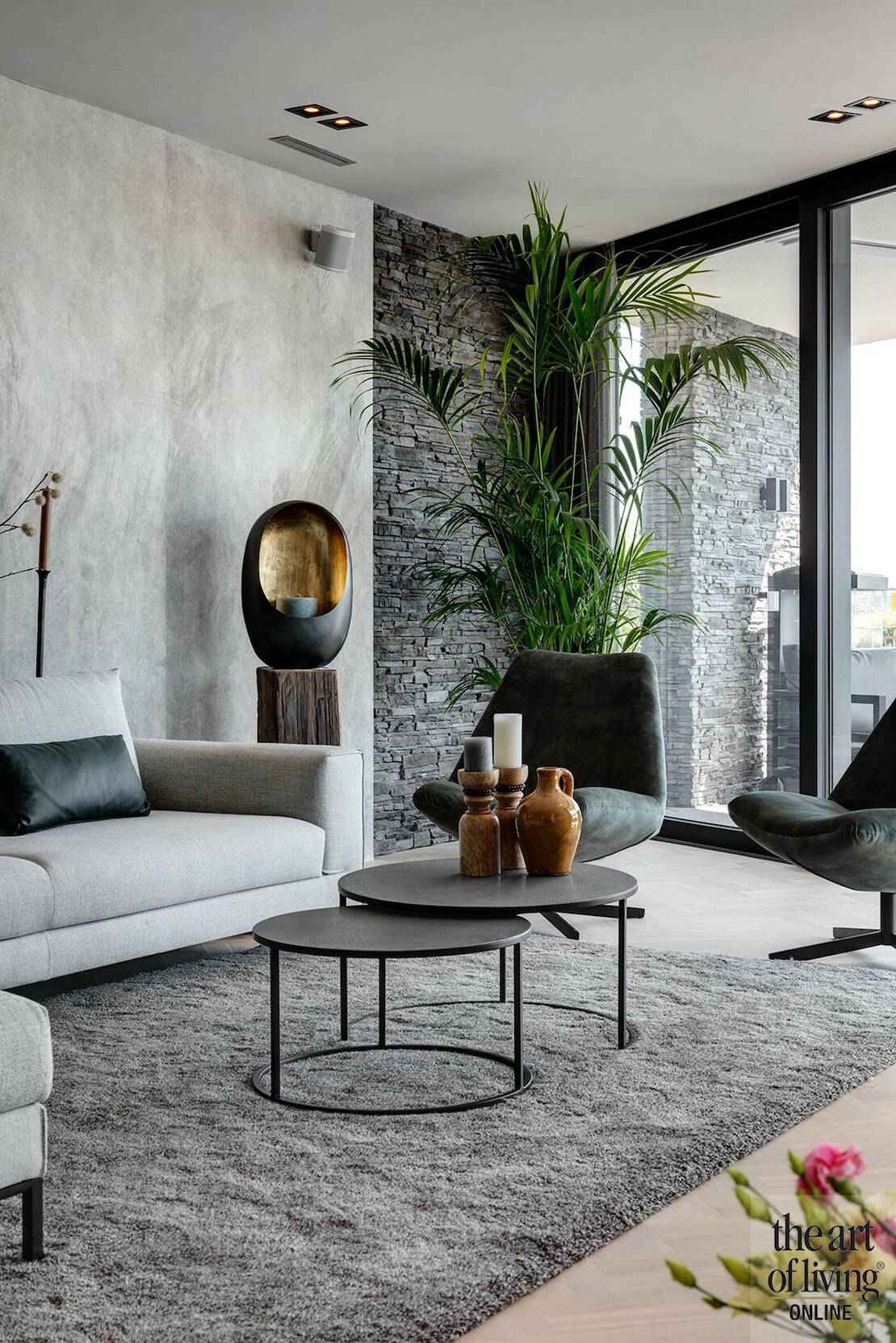
4. Contemporary Art

Crown your contemporary interior décor with an artwork that complements it. Abstract art with the contemporary color palette or a sculptural statue is a captivating way to add art and color to your home without overwhelming the space. You can also go for contemporary linear art, typographical art, or portraits according to your preference. Frames with finishes in natural wood, black and metallic finishes blend harmoniously into the contemporary design style.
Opt for standalone pieces over clustered collections for a clean neat look when working with contemporary design. This allows you to equally embrace the functional blank walls, which is a major feature of this design style.

Artful Allies
Art plays a fundamental role in contemporary interior design. Sculptural features characterize the furniture, architectural details, and furnishings. Therefore, when sourcing for functional objects for your space, look for simple but sculptural furniture to further elevate the aesthetics.

Studio Ardete ribbon-like sculptural wood installation, Contemporist, via Pinterest.
5. Contemporary Lighting Design
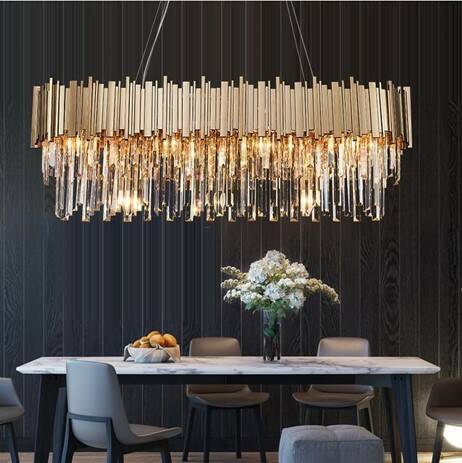
Luxurious Soleil Suspension, Shop Marie Antoinette,
via Pinterest.
Just like in modern lighting, contemporary lighting design maximizes the use of natural light, designing for large window openings and glass doors for optimum daylight. The natural daylight is then complemented with a generous amount of layered artificial lighting with the ambient, task, and accent lighting fixtures.
For ambient lighting, contemporary design incorporates LED ceiling-mounted lights, recessed lighting, and cove lighting in false ceilings, among other options, to provide general illuminance of the space. It is important to work with diffused or indirect lighting to maximize visual comfort, smoothen shadows, and reduce glare.
Task lighting provides adequate lighting for specific functions. In contemporary lighting design, you can introduce task lighting by installing modern lighting fixtures such as under-cabinet lighting, floor lamps, desk lamps, or even pendant lights over the counters or kitchen islands.
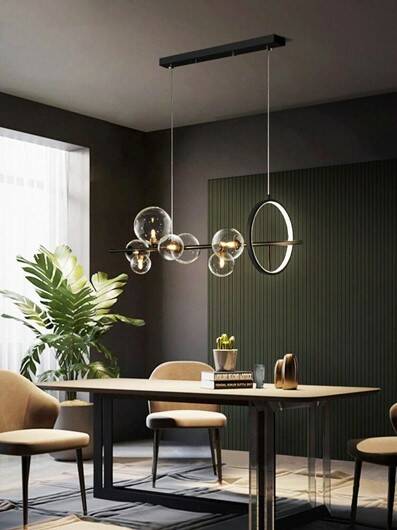
LightStylerest, via Pinterest.
Accent lighting introduces directional light, drawing focus to unique architectural features and artworks. It also sets the mood of the space. Introduce a track light or picture light over your contemporary artwork to bring it to life. You can also install unique wall sconces and wall lights in a warm color temperature to create a cozy, relaxing mood in your space.
Select light fixtures in forms that complement your contemporary design style. In the current times, big, artsy, and sculptural lighting has made its mark in the interior design world. Light fixtures now contribute largely to the aesthetics of the room, in large, bold, and unique designs that stand out in the décor, as opposed to the modest modern lighting.
6. Integration of Technology
Contemporary design is a display of the most current technological advancements that the world has to offer. Therefore, designing for sustainable homes, automated systems, dimmable lighting fixture, and energy-efficient digital appliances that improve user experience and enhance productivity within the spaces is highly essential.

Da Vinci Lifestyle, via Pinterest.
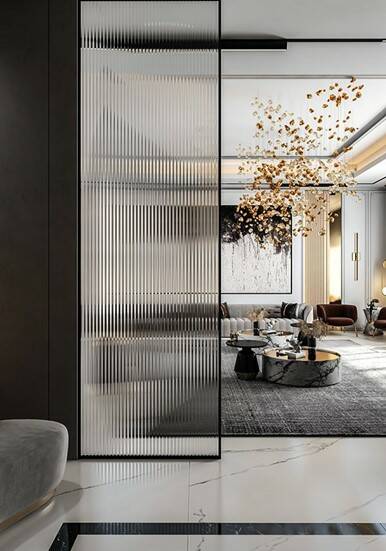
Staying Flexible and Relevant
Contemporary interior design is continuously progressing, adopting new trends and features as time goes. This means that it also gives you the flexibility to recreate your own style, working with the above principles and tips to create an exceptionally appealing aesthetic that is a true reflection of the current times. When in doubt, you can always hire a professional interior designer to guide you through the process.
Lighting is a fundamental aspect of contemporary interior design and plays an important role in achieving both the functionality and aesthetic of this design choice. There are many lighting ideas you can explore in the decoration of your spaces. If you’re looking to source for a contemporary light fixture that works perfectly into your décor, Perfect Picture Lights supplies unobtrusive, sleek track lights and quality picture light options in a variety of designs and finishes just for you.
______________________________________________________________________________________________________________________
 Winny Okoth is a practicing Construction Project Manager and Interior Designer. She is currently pursuing her Master’s Degree in Construction Project Management. Winny Okoth has a great passion for every form of design as well as 3D visualization skills for architectural and interior design.
Winny Okoth is a practicing Construction Project Manager and Interior Designer. She is currently pursuing her Master’s Degree in Construction Project Management. Winny Okoth has a great passion for every form of design as well as 3D visualization skills for architectural and interior design.


